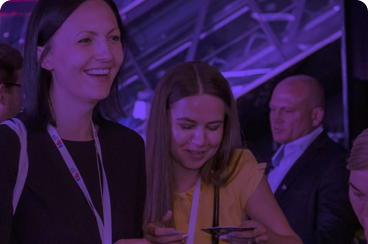UK media quality impacted amid turbulent times, according to the Media Quality Report H2 2020 by Integral Ad Science (IAS). In our member guest blog post, we spoke with Nick Morley, EMEA Managing Director at IAS on the performance and quality of UK digital media.
 Nick Morley leads the strategic development of the EMEA business at IAS, a global leader in digital ad verification. He has a proven track record in launching and scaling high-growth businesses across Europe, with a decade’s worth of digital advertising industry experience.
Nick Morley leads the strategic development of the EMEA business at IAS, a global leader in digital ad verification. He has a proven track record in launching and scaling high-growth businesses across Europe, with a decade’s worth of digital advertising industry experience.
It’s undoubtedly been a year that has transformed the digital advertising landscape. Consumers and the advertising industry at large, have shifted their focus toward digital in 2020 and media quality took centre stage in driving performance and enabling brands to forge better connections with consumers.
The latest Media Quality Report at IAS provides global benchmarks for viewability, brand safety and ad fraud across digital environments and formats, based on trillions of data events analysed each month worldwide that ran between July 1 and December 31, 2020.
An increase in UK brand risk
During an unprecedented year, UK brand risk increased across all media environments in H2 2020. Brand risk on desktop display rose 3.2 percentage points from H2 2019 to reach 5.8%. This represents a level of risk the UK has not seen since 2017 – a year defined by tragic domestic events and brand safety scandals. When comparing 2020’s brand risk levels to previous years, it’s clear that political and societal movements drove greater risk in online content.
Data shows that the increase of impressions flagged as posing a risk to brands was driven by a rise in adult, hate speech, and violent content. When looking at total impressions flagged as posing a risk across all environments in the UK, six in every 10 were related to content around illegal drugs, alcohol, or violence.
Carefully targeted strategies
Rather than a blanket approach to blocking online content, brands looking to navigate the ever-evolving digital environment should take a nuanced approach, considering the context and sentiment of the content alongside which they advertise. For example, not all pandemic-related content is negative or harmful to a brand, so advertisers needn’t miss out on opportunities to interact with engaged audiences by inadvertently blocking high-quality, contextually suitable publisher inventory.
Anti-fraud technology reduces wasted media spend
With consistent use of anti-fraud technology, ad fraud levels in the UK decreased in all digital ad environments throughout H2 2020, except for desktop video, which increased by 0.1 percentage points.
In contrast, advertising campaigns that did not use optimisation tools and strategies encountered fraud levels up to 11 times higher than those optimised against fraud. It’s imperative that brands looking to navigate the ever-changing media landscape utilise partners and technologies that are able to minimise the risk of investment being wasted on fraudulent impressions.
UK viewability continues to rank above global average
The wider adoption of the IAB Tech Lab’s Open Measurement Software Development Kit (OM SDK) has been a huge boost for the industry. Viewability within the mobile-app display environment increased 4.2 percentage points YoY to 72.9% in H2 2020, increasing the ability for digital ads to be seen by consumers. However, viewability levels slightly decreased across other media environments due to more digital content consumption, increased demand and constraints on high quality ad inventory during the busy holiday period.
Our Media Quality Report also found that as consumers have spent more time with digital content across 2020, the average time that ad content is in-view has increased, providing UK advertisers a greater opportunity to engage with their audiences. Time-in-view increased YoY for desktop display from 20.11 in H2 2019 to 21.34 seconds in H2 2020, and for mobile web display from 14.84 to 15.68 seconds over the same period.
A global outlook
As we look ahead, it’s important to understand how media quality is impacted by global events and technological shifts around the world. The Media Quality Report leverages this database to reveal global performance metrics and offer an industry barometer against which ad buyers and sellers can benchmark the quality of their campaigns and inventory. The MQR is just one of the many ways we continue to provide greater transparency throughout the digital advertising ecosystem.
To find out more about how advertisers and publishers can utilise these insights to improve media campaigns, download the Media Quality Report here.
